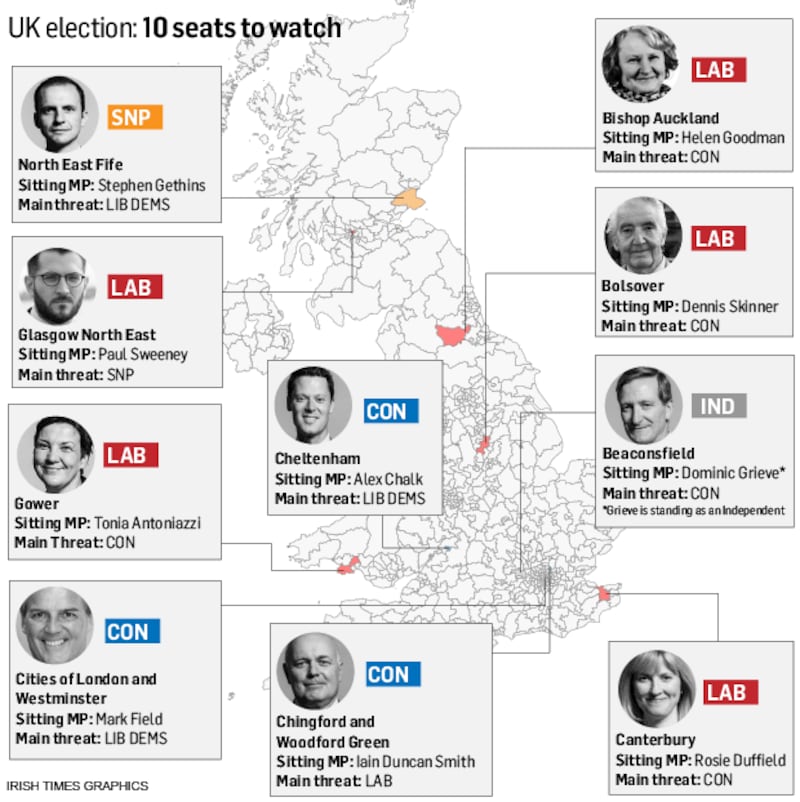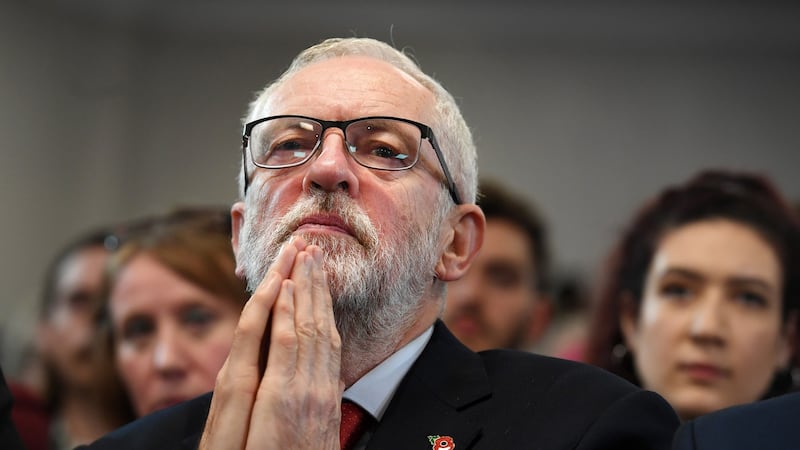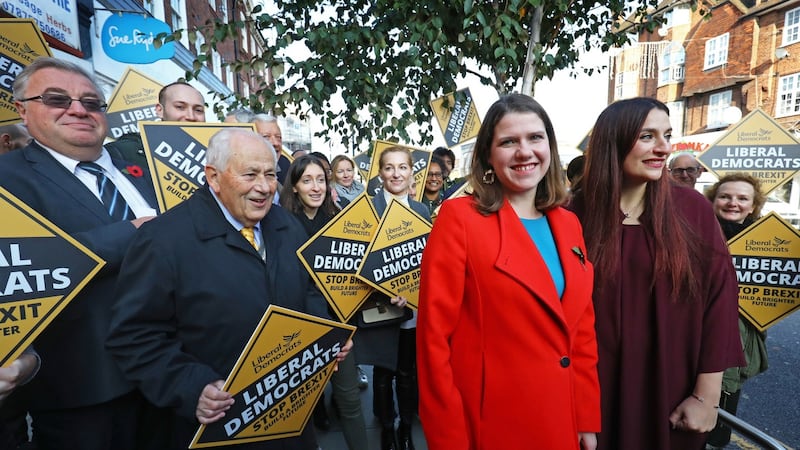Boris Johnson faces into next month's general election with a double-digit Conservative poll lead over Labour and a simple promise to "get Brexit done". But his path to victory is narrow and his party is haunted by the memory of 2017, when Theresa May threw away a Conservative majority in an election she framed as a choice about Brexit.
May went into that campaign with the Conservatives twice as far ahead of Labour in the polls as they are today and as a more popular prime minister than Johnson. But a poorly thought-out manifesto and a weak campaign, combined with a much stronger Labour performance than polls predicted, left her limping back into office with the support of the DUP's 10 MPs.
Johnson must win an overall majority if he is to remain in Downing Street after December – and he starts the campaign well short of that

The Conservatives have no allies at Westminster and the DUP are unlikely to enter into a confidence and supply arrangement without a promise from Johnson to renegotiate his Brexit deal. This means that Johnson must win an overall majority if he is to remain in Downing Street after December – and he starts the campaign well short of that.
The Conservatives currently have 298 MPs, more than 20 short of a working majority (taking into account the fact that the speaker does not vote and that Sinn Féin MPs do not take their seats at Westminster). They expect to lose seats to the Scottish National Party (SNP) in Scotland and to the Liberal Democrats and Labour in the south of England.
Johnson's strategy depends on winning dozens of Labour-held seats in constituencies in the North of England, the Midlands and Wales that voted Leave in 2016. If it is to succeed, the Conservatives must win seats like Bolsover in the coal-mining heart of Derbyshire, which Labour veteran left-winger Dennis Skinner has held for decades but voted Leave by a big majority.
Neighbouring North-East Derbyshire fell to the Conservatives in 2017 after almost a century and other nearby seats are vulnerable. Nigel Farage’s Brexit Party could siphon off votes from both main parties in such constituencies, making adding to their unpredictability under Britain’s first-past-the-post electoral system.
Johnson will be targeting Labour seats across the old industrial heartland in the North of England and the Midlands, hoping to ease residual suspicion towards the Conservatives with big spending promises on health, education and policing. The Conservatives are also hoping to pick up Leave-voting seats in Wales, including Wrexham, Gower and the Vale of Clwyd.

Public services
While the prime minister wants the election to be about Brexit, Jeremy Corbyn hopes to shift the focus onto Labour's traditionally strong issues such as the National Health Service (NHS) and other public services. Labour will also seek to hold Johnson to account for the Conservatives' record in office since 2010 and the impact of almost a decade of economic austerity.
Corbyn is promising a radical transformation of the economy that goes far beyond Labour’s pledge to re-nationalise water, rail and energy utilities.
A Labour government would strengthen the rights of workers, including those in casual employment and in the gig economy. Companies employing more than 250 people would have to transfer 1 per cent of their shares each year into workers’ ownership, up to a maximum of 10 per cent. Tenants in the rental sector would win greater protection and a massive programme of investment would insulate every home in Britain by 2030.

Labour hopes to confound expectations as in 2017 but Corbyn is more unpopular than before and the party is competing for Remain voters with the Liberal Democrats in England and the SNP in Scotland. Labour's success in 2017 has left many Conservatives defending slim majorities and the party is targeting a number of high-profile figures including former Tory leader Iain Duncan Smith in Chingford and even Johnson himself in Uxbridge.
Double representation
Most of the Liberal Democrats’ target seats in southern England are held by the Conservatives and the party is confident that it can at least double its current representation of 20 MPs. In London, however, the party is engaged in a number of three-way battles with the Conservatives and Labour as it seeks to capitalise on opposition to Brexit.
Three high-profile defectors to the Liberal Democrats – Chuka Umunna, Luciana Berger and Sam Gyimah – are standing in London seats where the party came third in 2017. Johnson hopes that by splitting the anti-Brexit vote, the Liberal Democrats will help to limit Conservative losses.
The Conservatives, Labour and the Liberal Democrats are all vulnerable in Scotland to the SNP, who account for 35 of the 59 Scottish MPs at Westminster. The Scottish Conservatives, whose popular leader Ruth Davidson resigned this year, are braced for the loss of more than half of their 13 seats. Labour, which was the dominant party in Scotland for generations, could lose all but one of their seats. And Liberal Democrat leader Jo Swinson is herself vulnerable to the SNP with a majority over just over 5000 in East Dumbartonshire.
Momentum
Although the Conservatives are ahead in the polls, Labour has the advantage of a large membership and a committed, affiliated campaigning group in Momentum. In previous elections, the Conservatives have sought to compensate for this disadvantage by busing canvassers into marginal seats. But a court found last year that centrally funding such operations was in breach of campaign finance rules.

Next month’s British general election is the first to be held in winter since 1974 and the cold and dark will limit all the parties’ capacity for door-to-door canvassing. This makes the digital campaign more important than ever and both main parties are investing heavily in social media campaigns.
Labour won the digital campaign in 2017 with creative messages that were widely shared, but the Conservatives hope to emulate the success of the 2016 campaign with relentless, aggressive, targeted messaging.













